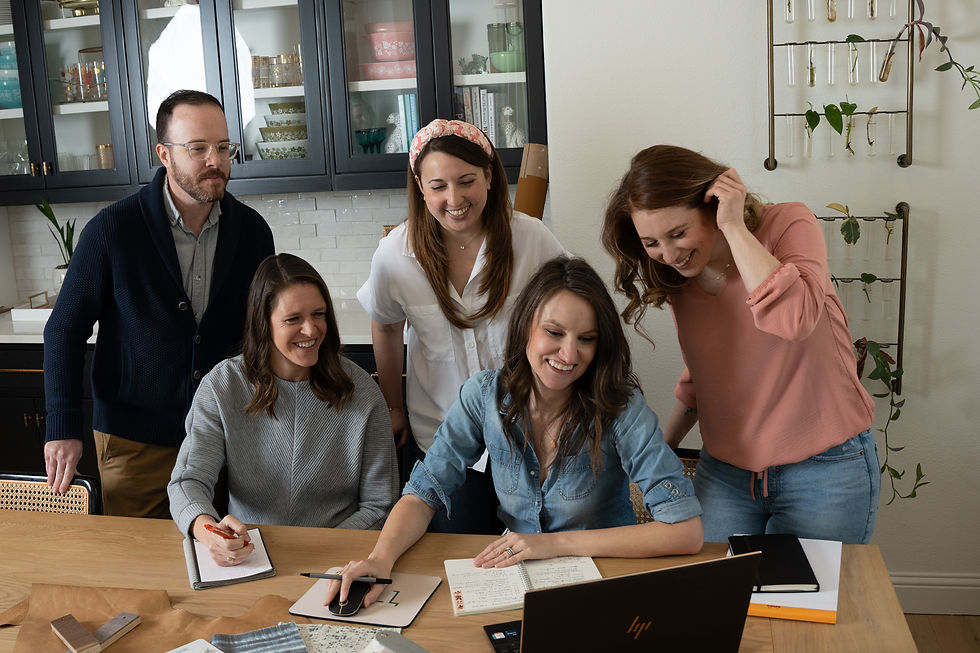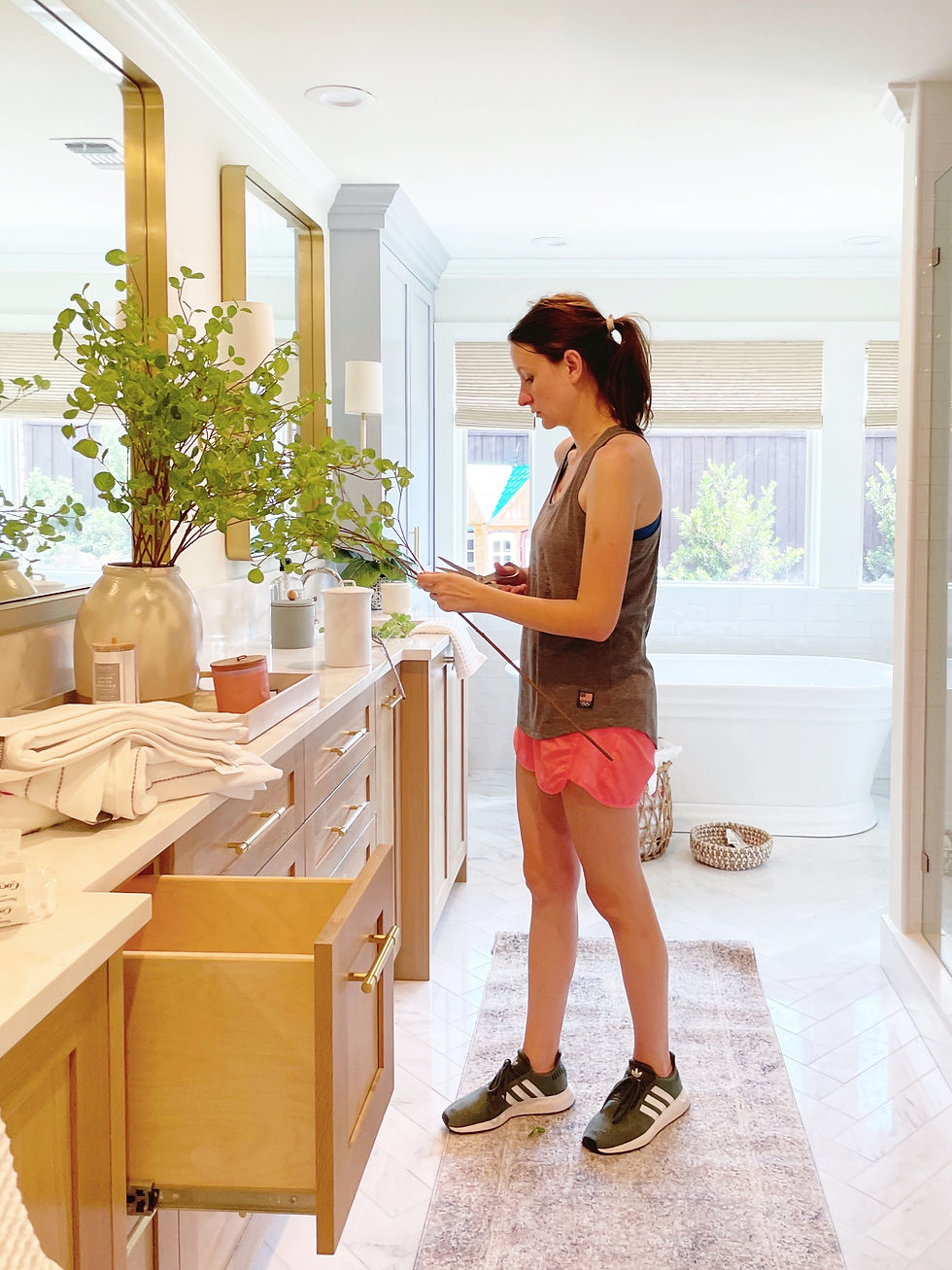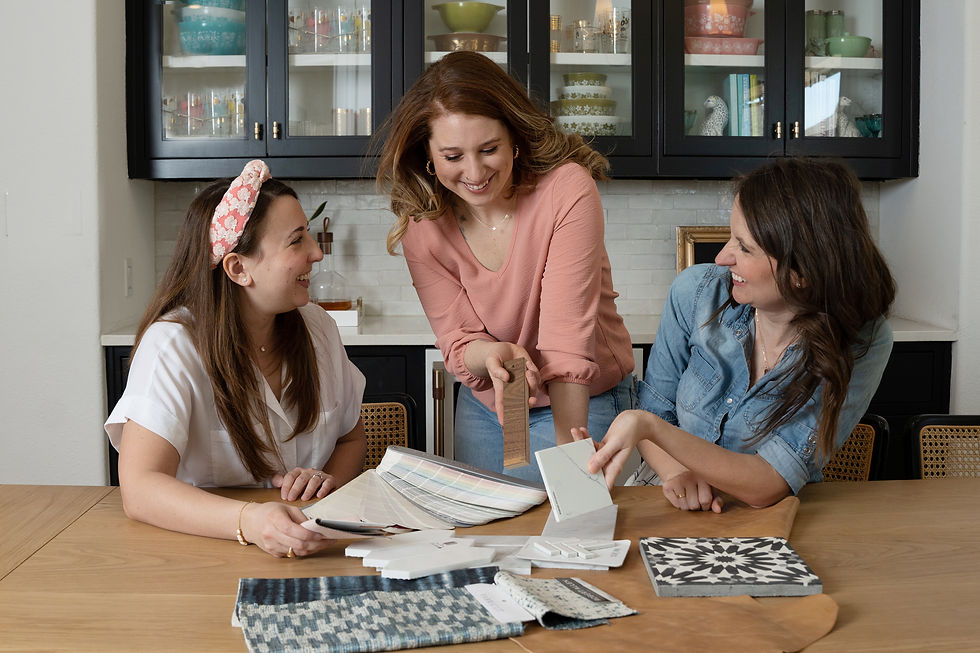This post is the result of an Instagram follower request. She reached out after having a, let’s say, lackluster experience with another Interior Designer and wanted to know what she should be looking for when she’s ready to put her hat back into the ring, so to speak.
What a great question! I addressed this a little bit in this post about what great renovations get right, but I wanted to go into more detail. If you’ve never worked with a Designer before, you may not know what questions you should even be asking, what makes for a successful partnership, and what pitfalls you might want to be on the lookout for.
And it’s really important to get right. A small project typically takes 3-6 months, and a large project can be 1-2 years (or longer!). You’re going to be spending a lot of time with your Design Team and investing your hard earned resources. You want to be sure you’re choosing the right partner so you can enjoy the process as much as the end result.
Let’s dive in. Here are 9 things to look for when hiring an Interior Designer.

EXPERTISE
Let’s start with the obvious one – you need someone who knows what the heck they’re doing. Look at their portfolio, website, and Social Media. Are they taking on projects of a similar type and scale to yours? You’re looking for a comfort level that they can handle your project. And if you’re not sure – ask!
Now, obviously, all Designers have to start somewhere. I had never designed a ground up house until that day I first designed a ground up house. But I had built up a reputation for doing great work and had completed larger remodeling projects, so it wasn’t a huge leap for our clients to know that we could pull it off and be a great fit for their needs.

REPUTATION
One of the best things you can do to ease your mind on hiring an Interior Designer is to talk with someone who has worked with them before. Something crazy like 90% of our business is either repeat clients or direct referrals, which (we hope) speaks volumes on what it’s like to work with us. If you can find a Designer who your friends or neighbors have had an awesome experience with, ask them details about what it was like working with them.
If you don’t have a direct referral, you can ask for your potential Designer to provide a list of references. I’ll say this, though (sassy Tara thought incoming)…no Designer/Contractor/Architect/Underwater Basket Weaver in their right mind is going to give you the contact info of a person who is going to say “Gosh, they were just awful to work with. Truly, the worst”. They’re only going to put you in contact with people who had great experiences and will sing their praises.
The same goes for reviews you see online. Without saying too much, one of our clients had a downright awful experience with their Contractor. I was shocked to see a 5-star review from them online a couple of months later on his website. He had asked them, and they felt guilty in saying negative things about him publicly, so they put up a nice review. I feel like the 5-star reviews and the 1-star reviews often need to be taken with a giant grain of salt.
And, if you can, try to find out the answer to the million dollar question – How do they handle problems.
Here’s the thing – humans are human and mistakes happen. The chair arrives damaged. The painter doesn’t show up. The wrong lighting is delivered. There is a conflict in the drawings. It’s highly unlikely that your project is going to be 100% flawless. What you want to know is how is your designer going to handle things when they aren’t going smoothly? Are they going to figure out what needs to be done and get it done? Are they going to blame everyone else? Are they going to ghost? If you can find out whether you have a Problem Solver or a Problem Avoider on your hands, you’ll be golden.

STYLE
Aesthetically, you want to work with a Designer that creates spaces that you think are pretty. While this might seem obvious, it’s not always the case. Most designers are fairly “fluent” in many design styles, but for example, I have no business designing an ornate, traditional, Mediterranean home. It’s not my jam, we don’t have a portfolio of that work, and honestly it would be a struggle. There are people who could do it better and faster than us, and I am quick to tell anyone who inquires with that style this very thing. But, if you want a soft, livable, beautiful semi-contemporary, transitional, or modern home that will live up to your pets and kids, be a comfortable place to live, and that you’re dying to invite your friends over to? We can help you ALL DAY.
Check out their portfolio and see if the spaces they create resonate with you. You don’t need to (and shouldn’t) try to find a home in their body of work that’s a carbon copy of what you want. The whole point is to create a space that’s tailored to you. But there should definitely be elements, styles, or moods in their work that you would enjoy having in your home.

PERSONALITY
Honestly if I was only going to share 1 piece of advice, it would probably be this – choose a designer who you actually like and see yourself wanting to spend time with. You’ll be interacting a lot during the course of your project. It’s nearly like choosing a spouse – you want to have a good vibe with them.
There are 2 great ways to figure ou if your Designer is a good personality fit for you:
The Easy Way – watch them on Social Media. Instagram is probably the best place to do this. Watch their Instagram Stories (particularly if they do videos where they speak to the camera) and read their captions. Do you feel like this is someone you’d enjoy spending time with? They don’t have to resonate with you like a long-lost best friend (though, awesome if they do!) but if you’re immediately turned off or have an negative vibe, take heed. The other great spot for this is to deep dive on their website. Read all the words, check out the blog posts, and get a sense for what it will be like to interact with them.
The Next Level Way – reach out and see if you can schedule a discovery call or Zoom meeting. Talking to a designer 1:1, even for just 15-30 minutes, will help you get a feel for whether or not there is chemistry between you.
Then, come back and do a little bit of introspection to determine what you truly need in a Design partner. Are you looking for someone on the cutting edge of design, who will give you strong opinions and steer you in the right direction? Consider someone who exudes expertise, professionalism, and style. Are you the type of person who goes to the doctor and finds yourself too nervous to speak up and ask follow up questions? Maybe you need a Designer who is more approachable and empathetic so you won’t feel intimidated sharing your design opinions.

DESIGN STUDIO STRUCTURE
Find out if your potential Interior Designer works Solo or has as Team. There are nuances to both.
With a solo designer you can be sure you are going to be working with them and only them 100% of the time. That might be a really awesome fit for you, knowing that you have a single point of contact for everything from design questions, to “when is my end table shipping” to “I have a question on my invoice.” I operated this way for years and it fosters a great closeness between Designer and Client. But I eventually transitioned to having a small but mighty team; here’s why.
With a Design Team you gain a few things –
Coverage – when you have a team of people to call upon, you can get a hold of someone even if your lead designer is on vacation or in a meeting. You aren’t beholden to one person’s schedule.
Specialization – a Team allows each individual to shine in a big way inside of their Zone of Genius. Our projects all have a Lead Designer who is our client’s main point of contact, but behind that key Designer is a boatload of support. Our Admin schedules meetings, touches base with our clients regularly, and helps ensure emails get answered and don’t fall through the cracks. Steven runs all of the invoicing and back of house business things. One of our designers is a Guru at furniture; another is killer on remodels, and both of them are great with details. I excel at creating a Vision, pulling out what our Clients’ needs and desires are, designing key features to make your home special, but dang it, I will never remember what your grout color is. By leveraging a Team of experts, you aren’t relying on one person being excellent at EVERYTHING. Which also leads to…
Speed – We are able to serve our clients so much faster because we simply have more hours in the week than an individual does. I can be in meetings all day Monday – Thursday, but work is still getting done. Our clients at the whim of my meeting schedule to have their needs met. And finally
Quality – Having multiple experts involved means that details are checked by more than one set of eyeballs. Have you ever read an email that you proofread over and over, only to hit send and immediately see a glaring typo? (Unsend, UNSEND!) Imagine that, but on a set of Construction Drawings or a custom non-returnable sofa! Yowza. A team offers another level of quality control that you may not have with just one person.
There isn’t a right way or a wrong way here, just what will work best for you.
COMMUNICATION
Just like in marriage, communication is key on a project. You want to work with someone whose communication style is a match for yours.
For example, we are in frequent contact with our clients, but try not to bombard them through the week for anything non-urgent (they are busy enough). We send weekly emails every Friday to update our clients on anything that’s happening through the week and let them know what’s coming. We will always take a phone call and often like to pretend it’s the 1990’s and just pick up the phone, but steer away from text messages so that the information doesn’t get lost (and so that we can get focused work done without 100 notifications all day. DING!).
That may be a perfect fit for you, or you may need something different to have a great experience.

AVAILABILITY
Oooh, this is a big one. For example, we operate 9-4 Monday through Friday and aren’t available on nights and weekends (so we can spend quality time with our friends and family). We’ve found that this structure works for most people, but some people really want a designer that they can go shopping with on the weekends or that can meet at night after they get home from work. You definitely want to know how your Designer’s operating hours to avoid having totally mismatched expectations, leading to a frustrating experience.
HOW THEY CHARGE
This one is tricky, because there are 3 main ways that designers charge for their services, which most people aren’t aware of:
Hourly – this is the simplest. The designer estimates how many hours it will take to complete the work, you agree, and you’re charged their hourly rate for the work completed. Simple. But be sure that they have a measure in place to let you know if they figure out along the way that the project is going to require more hours than anticipated. You don’t want surprises here.
Lump Sum – this is the most straightforward. The designer quotes you a fee to do the entire project, start to finish. You then pay them monthly or as large chunks of the work are complete. It’s nice because your price is locked-in unless you request additional work.
Markup – this is most common for furniture, and is often paired with one of the other methods. Designers have access to an entire world of vendors that aren’t open to the public, at wholesale prices. Typically a designer will mark up that wholesale price by a percentage (varies from 10%-50%, depending on the depth of their discount). You typically pay for the piece at or below retail value.
Combo – Many designers use a combination of these services depending on the project. For example, we will add a small markup to wholesale furniture that still gives our clients a discount on retail prices, but we do not mark up retail pieces that are available to anyone (aka we pass along our trade discounts to our clients). We will typically bill hourly for Small Projects (so we can be agile and adaptive), and Lump Sum for large projects (so we can provide a higher level of service).
Again, no right or wrong here, but you’ll want to understand how your Designer is charging before you dive in!

THEIR PROCESS
While there are industry standards to how the design process typically flows, every Designer operates a little differently. You want to understand how the process flows from start to finish, how often you’ll meet, how long things should take, what might be expected of you in terms of your time commitment, etc. A Designer should clearly be able to articulate this process for you!
Hopefully this list is helpful if you’re looking to hire a designer. If I had to distill all 2000 words of this post in a sentence (maybe I should have started there) it would be this:
Aligned expectations are the best way to have an incredible design experience.
Know what you need, ask questions, and seek out a Team that can deliver that!
And, of course, if you’re into a Small but Mighty Design Team who are passionate about creating livable beauty, find joy in guiding our clients through this process, and live to write 2000 word blog posts, you know who to call.



Great article it is very helpful and informative content thanks to share with us dude keep it up
Gothic Jackets
You’ve got multiple assignments piling up, and there just aren’t enough hours in the day to get everything done. Instead of panicking, why not delegate some of the workload to professionals? With essay paper writing services you can order essays and a wide range of writing services from experts who know what it takes to succeed. Their skilled writers ensure each piece is original, well-researched, and delivered on time. Whether it's a short essay or a lengthy dissertation, you can rely on their professionalism to help you meet your deadlines with confidence.
As someone navigating the complexities of job search and employment, your post struck a chord. Just like finding the right interior designer, aligning with the right career partner is crucial. Expertise, reputation, communication, and understanding your unique style all play a vital role in ensuring success. It’s a process where trust and aligned expectations lead to outstanding results. Reading Browning Associates reviews, I noticed the same emphasis on personalized guidance and delivering on promises. Whether designing a space or navigating a career transition, it’s all about finding a partner who sees your vision and helps make it a reality.